The deep sea may very well be the answer for those seeking bizarre creatures, regardless of explanations about their origins. This year, marine biologists have recorded astonishing footage of movements on the ocean floor, where “alien-like” species exist alongside strange new organisms hiding in the depths.
Here are the 10 strangest deep-sea creatures published by Live Science.
Blood-red jellyfish
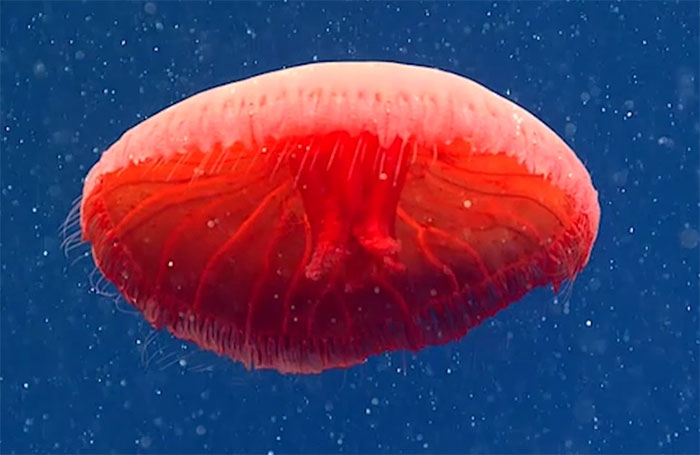
A completely new species of blood-red jellyfish, yet to be named, was discovered by researchers from the National Oceanic and Atmospheric Administration (NOAA) using a remotely operated vehicle (ROV) at a depth of about 700 meters off the coast of Newport, Rhode Island, USA.
Many deep-sea creatures have evolved to be red because red light wavelengths do not penetrate deep into the ocean. This means that red animals appear black and can avoid large predators.
Glass octopus
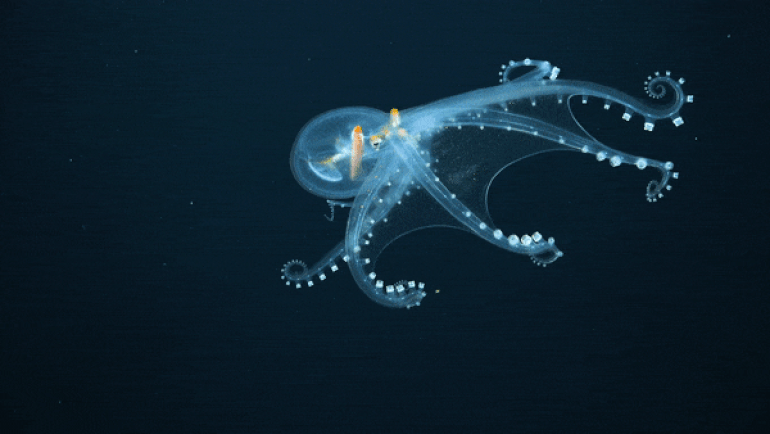
In 2021, researchers from the Schmidt Ocean Institute (SOI) discovered a glass octopus (scientific name: Vitreledonella richardi) off the coast of the Phoenix Islands, over 5,100 km from Sydney, Australia.
Like other “glass” creatures, such as glass frogs and jellyfish, the glass octopus is nearly completely transparent, with only its cylindrical eyes, optic nerves, and digestive tract appearing in a translucent color.
Shape-shifting whale
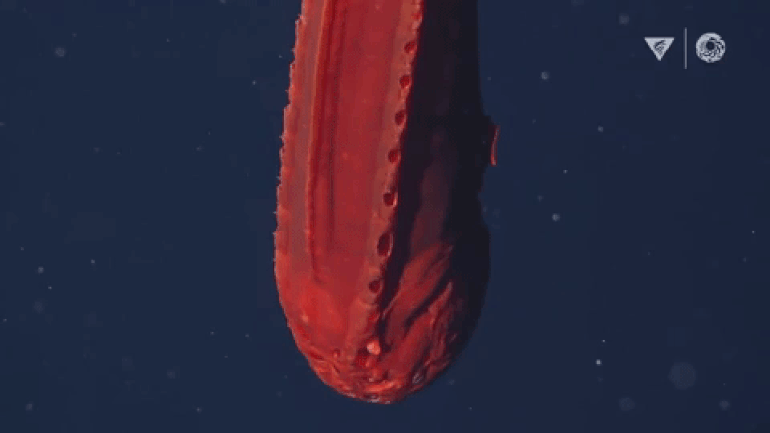
The Monterey Bay Aquarium Research Institute (MBARI) released footage showing a bizarre female whale, bright orange in color, belonging to the order Cetomimiformes, at a depth of about 2,013 meters off the coast of Monterey Bay, California, USA.
Very little information is available about this strange fish species. What draws scientists’ attention is their shape during different stages of development and gender. They look so different that at first, researchers thought they were different species. The transformation from juvenile to mature female is believed to be one of the most extreme actions for any vertebrate species.
Dumbo octopus
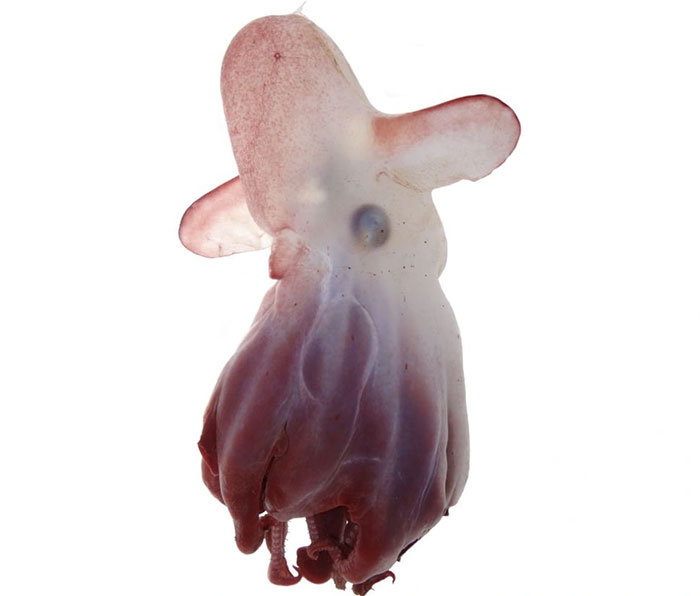
In May, researchers discovered a completely new species of Dumbo octopus (scientific name: Grimpteuthis imperator), nicknamed “Emperor Dumbo.”
It was accidentally brought up from the water in a net. Its tentacles and ear fins are oversized, resembling the ears of Dumbo the elephant from the famous Disney animated film.
Sponges and starfish as “best friends”
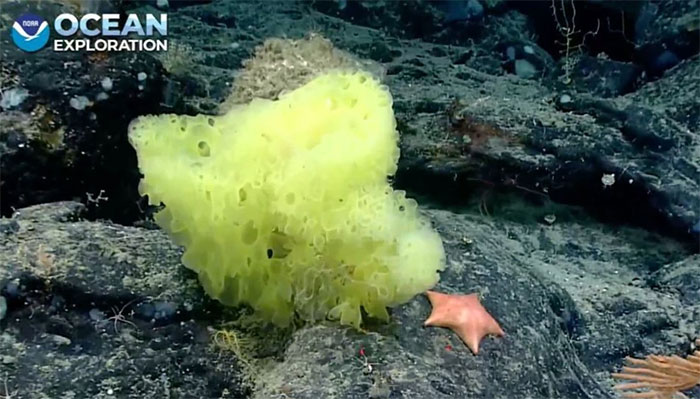
A humorous photo of real-life counterparts of two cartoon characters, SpongeBob SquarePants and Patrick Star, was discovered next to each other on the ocean floor.
The image shows a square yellow sponge and a pink five-pointed starfish, captured by ROV equipment on July 27, at a depth of 1,885 meters during the Retriever Seamount expedition off the coast of New England.
Alien-like squid
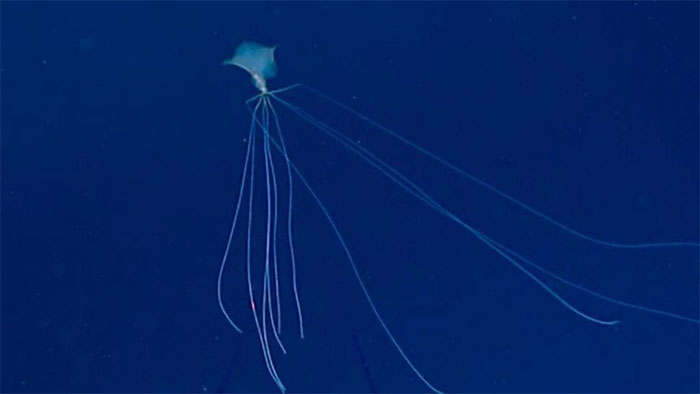
In November, NOAA scientists discovered a rare large finned squid (belonging to the genus Magnapinna) during an expedition in the Gulf of Mexico.
This strange squid has a very unusual body with large, shimmering fins and bizarre elbow-like curves on its tentacles, which is considered very atypical for a squid.
Giant phantom jellyfish
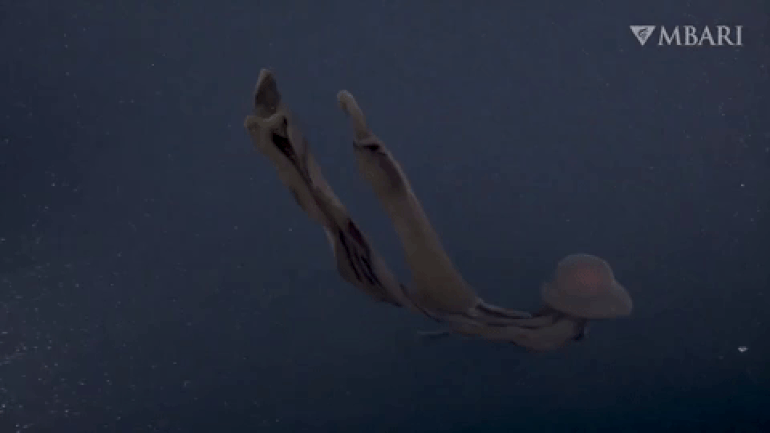
In November, MBARI released rare footage of the giant phantom jellyfish (scientific name: Stygiomedusa gigantea). It looks like a massive gray-black blob, with a bell about 3 meters wide and tentacles resembling giant ribbon-like arms, reaching up to 10 meters long.
There is not much information about the phantom jellyfish, but scientists believe they use their “arms” to trap prey and pull them toward their mouths.
Purple-back squid
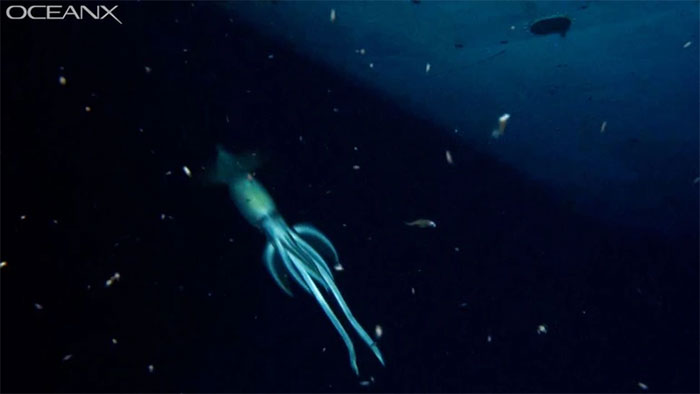
The giant purple-back squid (scientific name: Sthenoteuthis oualaniensis) was inadvertently spotted by scientists investigating a shipwreck in the Gulf of Aqaba.
It was found at a depth of about 850 meters, with a total body length of approximately 2 meters, close to the maximum size of the species. The purple-back squid has a dark, thick tail that fans out like a fish tail.
Mysterious trails on the ocean floor

Evidence of strange trails left by sponges as they crawl across the ocean floor in the Arctic was discovered in April. This is the first evidence of sponges crawling along the ocean floor, as researchers captured images of unusual brown markings left by these incredible mobile creatures in the Arctic.
Glass-headed fish
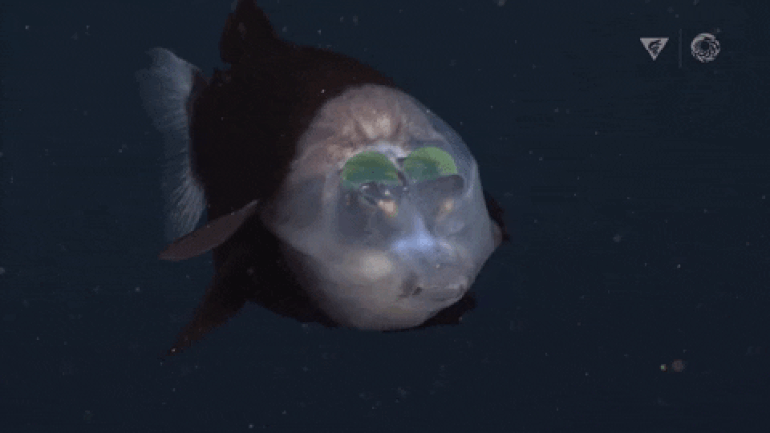
Footage of a barreleye fish, or glass-headed fish (scientific name: Macropinna microstoma) was recorded by MBARI scientists in the Monterey Submarine Canyon at a depth of about 650 meters.
These fish live in the deep ocean, possessing a transparent head with two green tubular eyes located on the top. The eyes are surrounded by a transparent shield structure filled with liquid. Scientists have only discovered this species nine times before.





















































